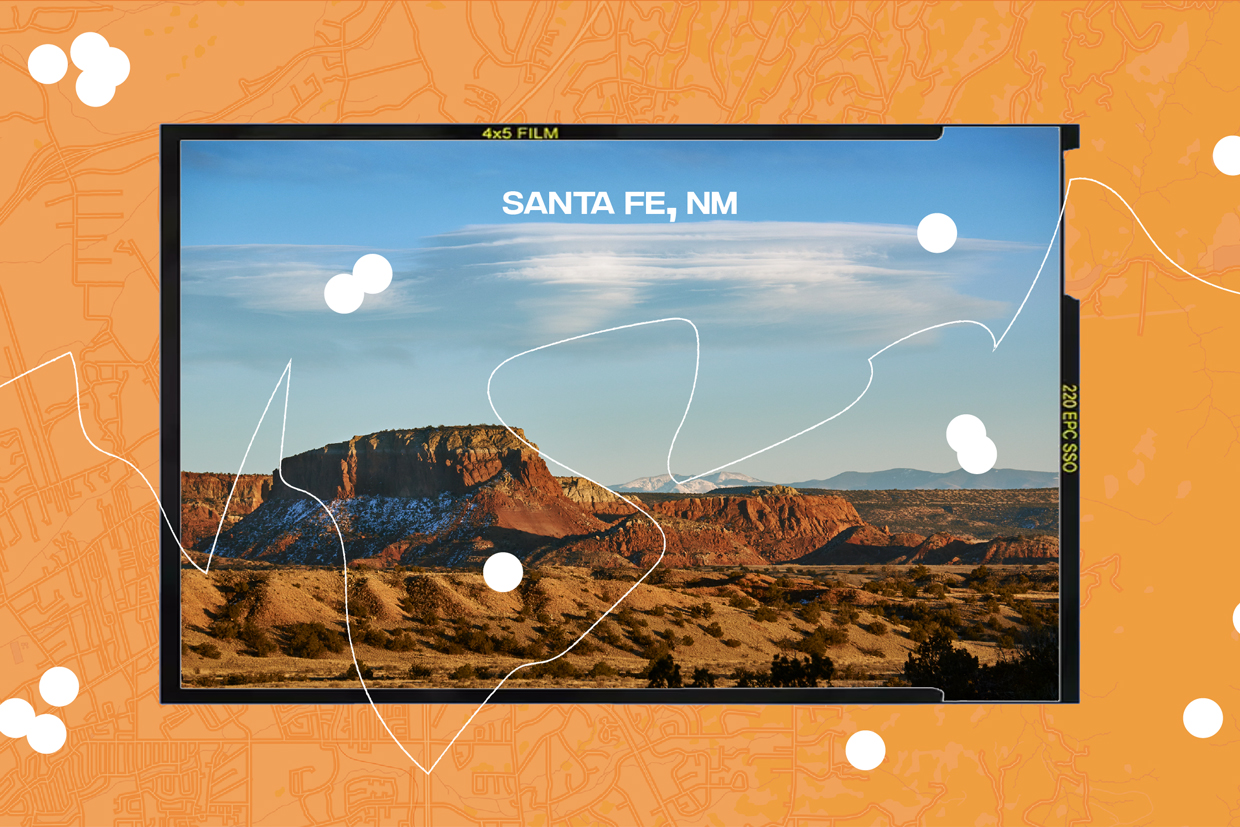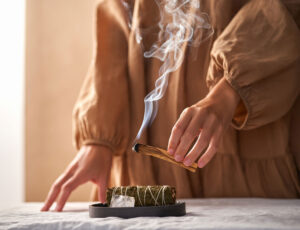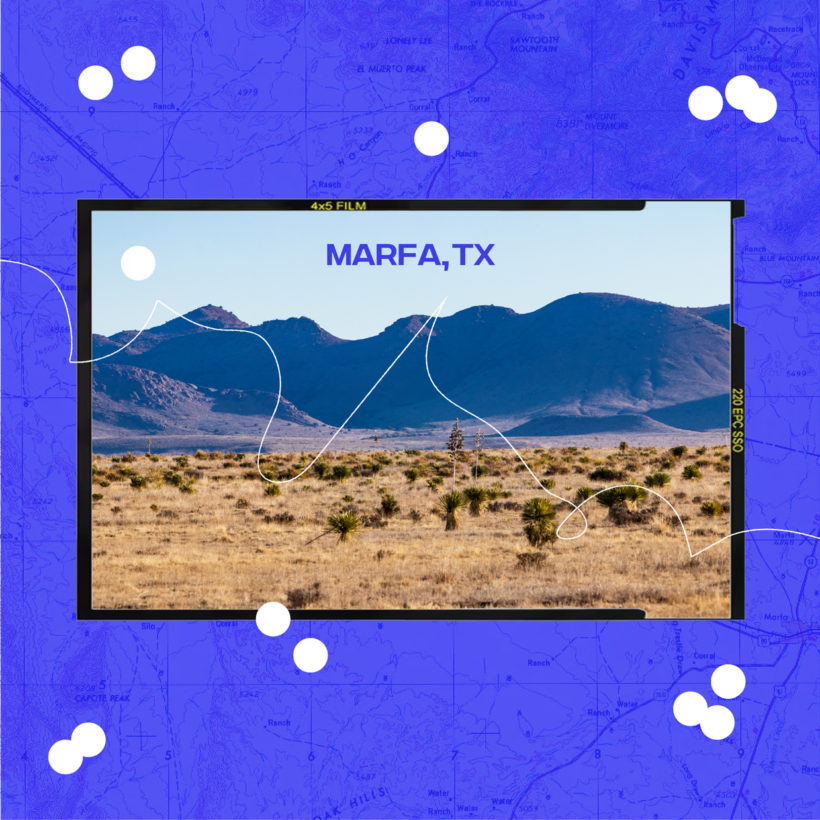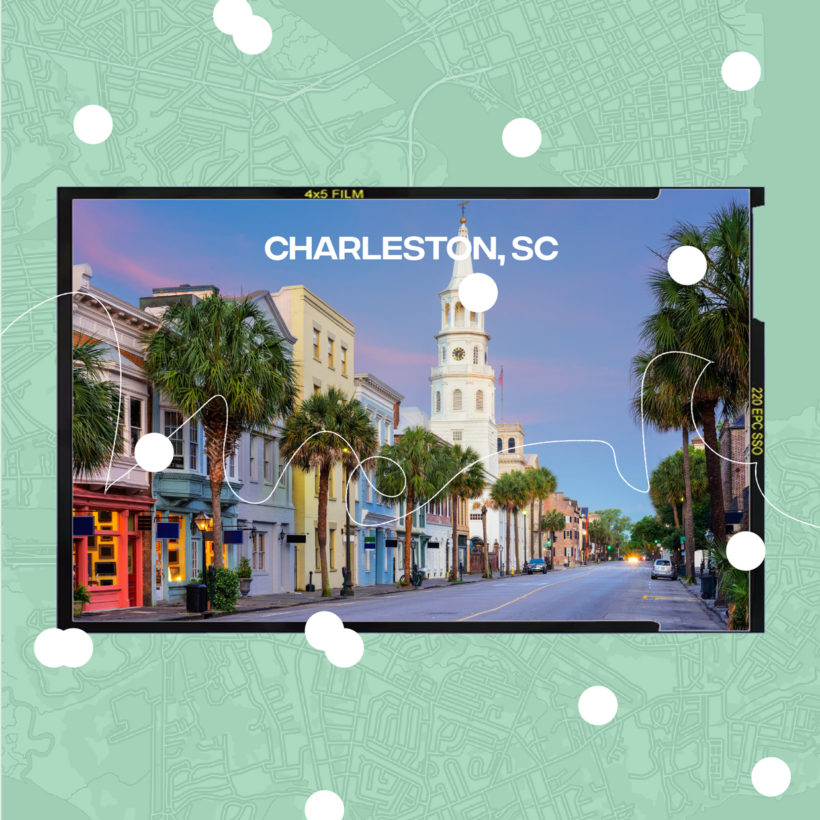Known as “The City Different,” it doesn’t take long to see what’s special about America’s oldest state capital. For starters, no other American town replicates its Pueblo Style architecture (think: rounded walls, fireplaces, enclosed patios, and flat roofs). The city code not only protects the color scheme of the adobe buildings (they must be predominantly brown, tan, or Earth-toned), but the buildings also can’t go above five floors to preserve the unobstructed views of nature. The major charm is in its small-town feel and the fusions of Hispanic, Anglo, and Native American cultures everywhere you look, particularly in the art and food scene. Whether you’re in the mood for Southwestern flavors or other global cuisines, you’ll find a meal that’s so good, you’ll forget to foodstagram it before diving in. Plus, even though it has four seasons, it’s sunny almost all year round, making it a great time to visit at any point during the year.
Where to Stay
Ten Thousand Waves ($$)
Adjacent to the Santa Fe National Forest, you’ll find this lodge and spa-inspired by Japanese mountain hot springs. From the architecture to the gardens to the decor, everything looks tasteful, not kitschy as if you’re at a museum gift shop. Guests who stay over practically don’t even need to bring a change of clothes: You can walk around the property in the provided yukata (casual kimono). The real draw is the spa, which started off as a modest bathhouse, but now is an oasis that resembles a Japanese onsen. You can relax in the communal tub or private tubs while surrounded by nature. It’s particularly magical under a clear, starry night sky during the winter. The on-site Izanami restaurant is worth multiple visits, even if you’re not a guest. It has an izakaya-style menu (which are small plates designed for sharing) with plenty of vegetarian/vegan options. Chef Kiko Rodriguez adds a Spanish flair to the meals thanks to his background in tapas-style cooking. The restaurant also features artisanal microbrew cold sake, green teas, and Japanese craft beers. Let’s just say you’ll have a tough time finding a reason to leave.
Rosewood Inn of the Anasazi ($$$)
Located in the historic square of Santa Fe, Rosewood Inn of the Anansazai is a convenient, five-minute walk from the downtown area where there’s shopping, museums, and plenty of dining. The aesthetic of the inn captures the spirit of the Anasazi people that inhabited southwest America with calming fireplaces, natural wood beaming, and elegant decor. It has 57 rooms, plus the residential-style Anasazi suite that has a foyer, living room, one or two bedrooms, and a dining area. In addition to the Anasazi Restaurant, patio dining, and a wine cellar that’s available for private events, there’s an on-site bar that offers the town’s only “Tequila Table” — a guided experience featuring an extensive collection of tequilas.
The Inn of the Five Graces ($$$)
There’s nothing cookie-cutter about this award-winning inn: Outside in the courtyards you’ll find lush foliage, soothing fountains, and plenty of nooks to sit back and linger around while you take in the scenery. Inside, each of the rooms are distinctly decorated with hand-laid tile mosaics, intricate fabrics, colorful pillows, and tchotchkes from the owners’ travels to Turkey, Afghanistan, and Tibet. Even the gym area is splashed with color. Nearly all of the 24 rooms feature king-size beds, wood-burning fireplaces, and some have private balconies. The on-site spa services will also serve your five “graces” (senses) by incorporating herbal compresses, salt stones, and towels soaked in nourishing local herbs.
Where to Eat and Drink
Vinaigrette
Harvard grad Chef Erin Wade is the owner of this airy salad bistro that has three locations (Santa Fe, Albuquerque, and Austin). Wade raises most of the the produce on her own ten-acre garden — the rest comes from local sources — with fruits and vegetables that are at peak freshness. You’ll find cheekily named salads like All Kale Caesar and the Nutty Pear-fessor, savory sides like Mac and Cheese, soups (go for the Cajun Gumbo), and sandwiches. It’s a tipless restaurant, which means the prices of the menu include service so that the staff is paid a fair wage. In the summer their outdoor patio is the perfect spot to enjoy a mimosa or a glass of rosé. Open Monday – Saturday 11 a.m. to 9 p.m.
Modern General Feed & Seed
Right next store to Vinaigrette is this stylish café and home goods shop that’s also owned and run by Wade. You’ll get hooked on healthy juices, smoothies, and tonics that focus on ingredients that tame inflammation, improve heart health, and get skin glowing. You’ll find a simple menu of baked goods that are made with natural starters instead of commercial yeast. The brunch menu is also super-curated with healthy, unique options like coconut pancakes, coconut chicken salad sandwiches, and lime avocado chia pudding. Modern General’s motto — “nothing you don’t need” — reflects the practical and organic assortment of pantry items like sugar, flour, and grains, in addition to simple, chic household necessities like kitchen utensils and gardening sets. Open every day for breakfast and lunch.
Geronimo
Ask any local or tourist, and they’ll say you can’t leave Santa Fe without dining at Geronimo. Winner of the AAA Four Diamond Award and Forbes Four Star Award, this elegant fine dining establishment has its international reputation because of its consistency. You’ll find a seasonal menu with inventive dishes that make the outing feel special, like mesquite grilled lobster tails, miso sea bass, and elk tenderloin — to name a few. Occupying the famous Borrego House that was built in 1756 by Geronimo Lopez, the restaurant’s soothing lighting, gentle background music, and cushioned banquettes all contribute to the romantic vibe. The cocktails are also classy and worthwhile — the only problem is you’ll have trouble narrowing down which you’ll pick. Thanks to Santa Fe’s 7,200 foot elevation, you’ll likely feel a buzz with just one drink. Open every day starting at 5:30 p.m.
Kakawa Chocolate House
Kakawa (meaning “cacao” in Olmec — the earliest known Mesoamerican civilization) is an artisanal chocolate shop specializing in drinking chocolates including Pre-Columbian, Mesoamerican, Mayan, and Aztec chocolate elixirs, plus truffles, chocolate bars, caramels, and more. You’ll find imaginative creations like cherry chili, prickly pear, and their signature goat cheese and sage flavors. The delicious smell of the chocolate house alone is enough to lure you in. Open Wednesday to Sunday from 11 a.m. to 6 p.m.
What to Do
Kasha-Katuwe Tent Rocks
A little less than an hour outside Santa Fe, this national monument’s cone-shaped formations look like little tents, hence the name. They’re a result of six million year old volcanic eruptions that left behind deposits up to 1,000 feet thick. It’s a three-mile hike that takes you through the Instagram-worthy canyon walls. While it’s a relatively easy hike if you’re a newbie, you’ll still want to wear proper hiking boots as there’s some light climbing involved before you reach the amazing views at the top. Entry begins at 8 a.m. until 4 p.m. We recommend going right when it opens to avoid the crowds as some pathways only allow one person at a time.
Georgia O’Keeffe Museum
This museum is dedicated to the American Modernist painter who spent most of her summers working in New Mexico for two decades until making it her permanent home. Inspired by the desert landscapes and the Native American culture, O’Keeffe’s collection of 700 drawings span each decade of her life. You have to get your tickets for the museum in advance and it’s open from 10 a.m. to 5 p.m. Thursday through Monday.
Loretto Chapel
This former Catholic church built in 1873, which is now a museum in addition to a wedding chapel, is home to the “Miraculous Staircase,” a wooden masterpiece that stuns present-day carpenters since it was constructed with minimal resources and none of the technology we have today. The legend has it that when the original architect died before he could finish building the access to the choir loft, the Sisters of Loretto were then told a staircase couldn’t be built because the space was too small. They prayed to St. Joseph (the Patron Saint of Carpenters) for nine days and, finally, a mysterious carpenter showed up with only a hammer and a carpenter’s square to build the spiral staircase. Some versions of the story say he built the staircase within just the day; others say it took months. The carpenter disappeared after completing the job without asking for his pay, and some believe it was St. Joseph himself.
Canyon Road
In the Sangre de Cristo Mountains, Canyon Road is a half-mile strip that hosts Santa Fe’s historic arts district. Whether you’re looking for art that’s traditional Native American, abstract, modern, contemporary, or something in between, you can browse over 100 galleries from local artists. Plus, there are antique shops, clothing boutiques, and dining (both Geronimo and The Compound are faves) that can easily stretch out to a whole-day affair.







